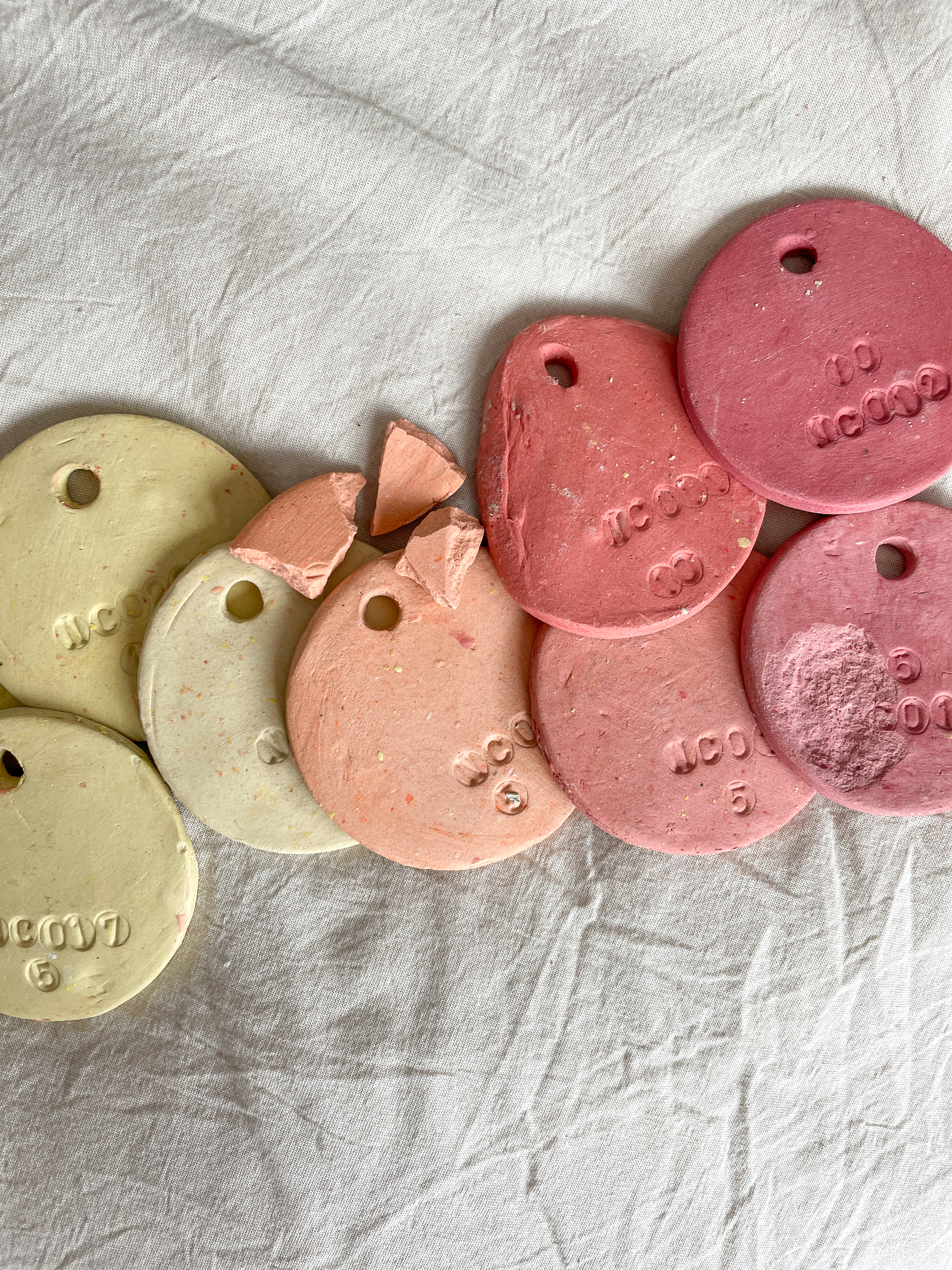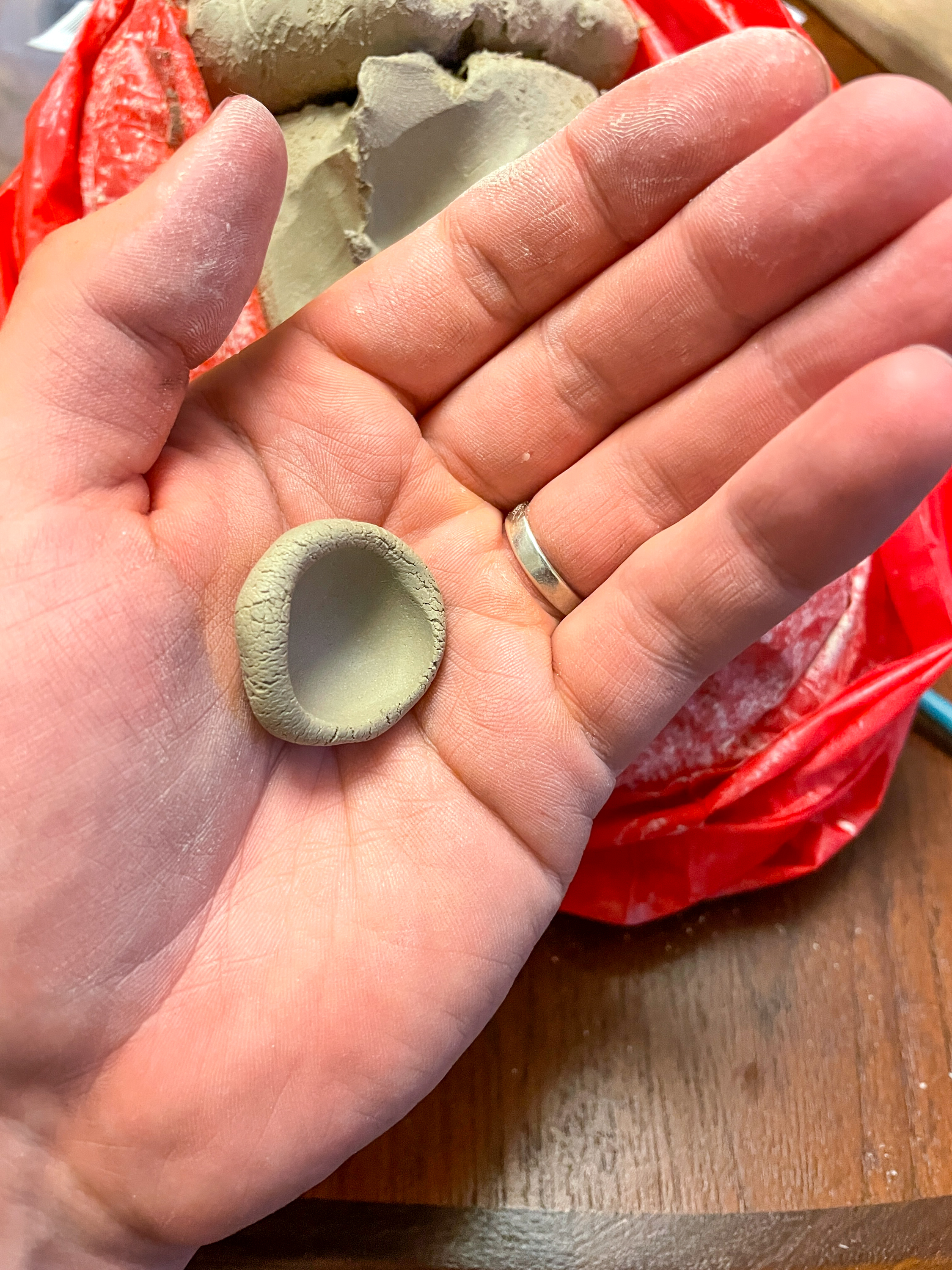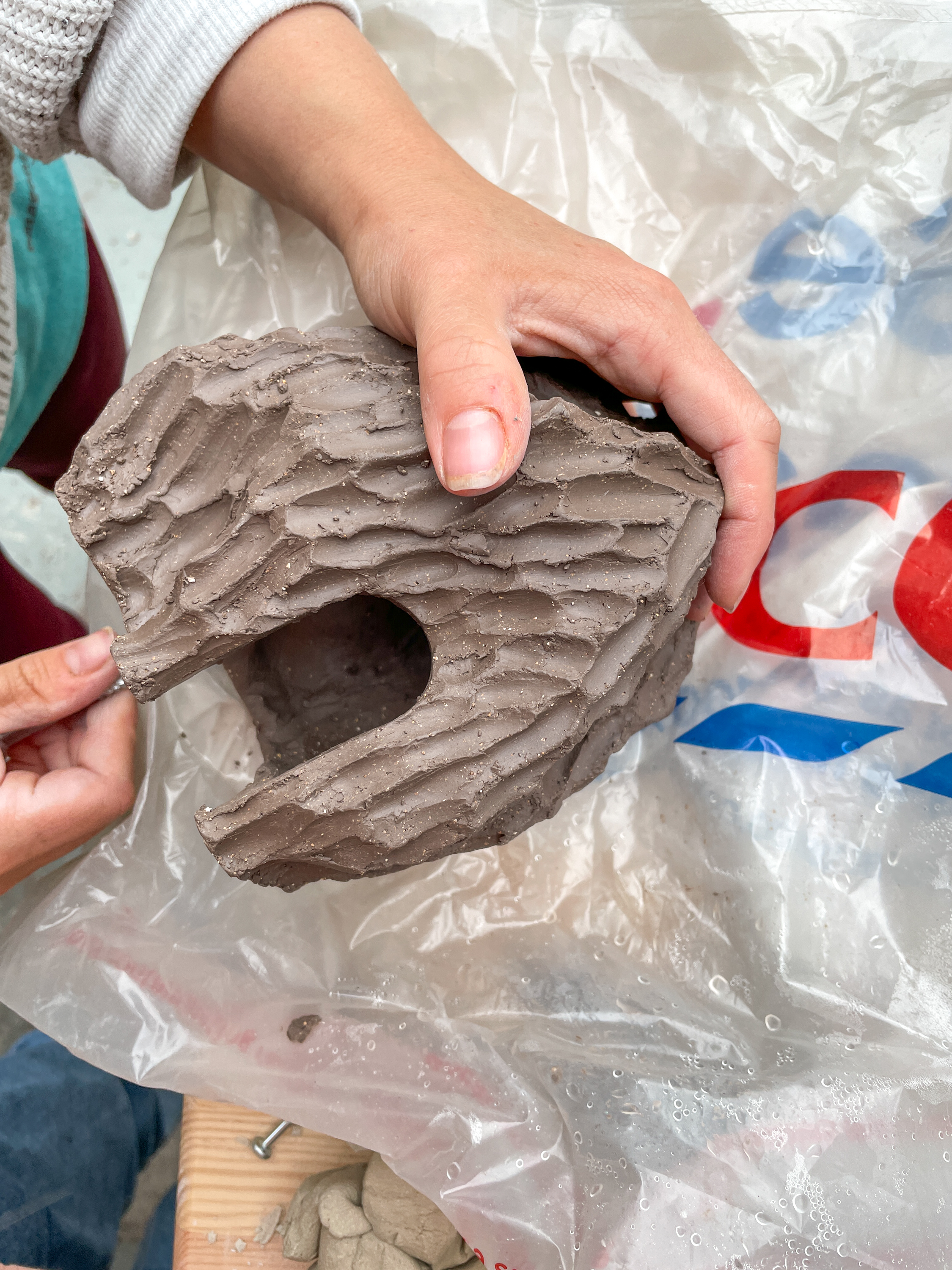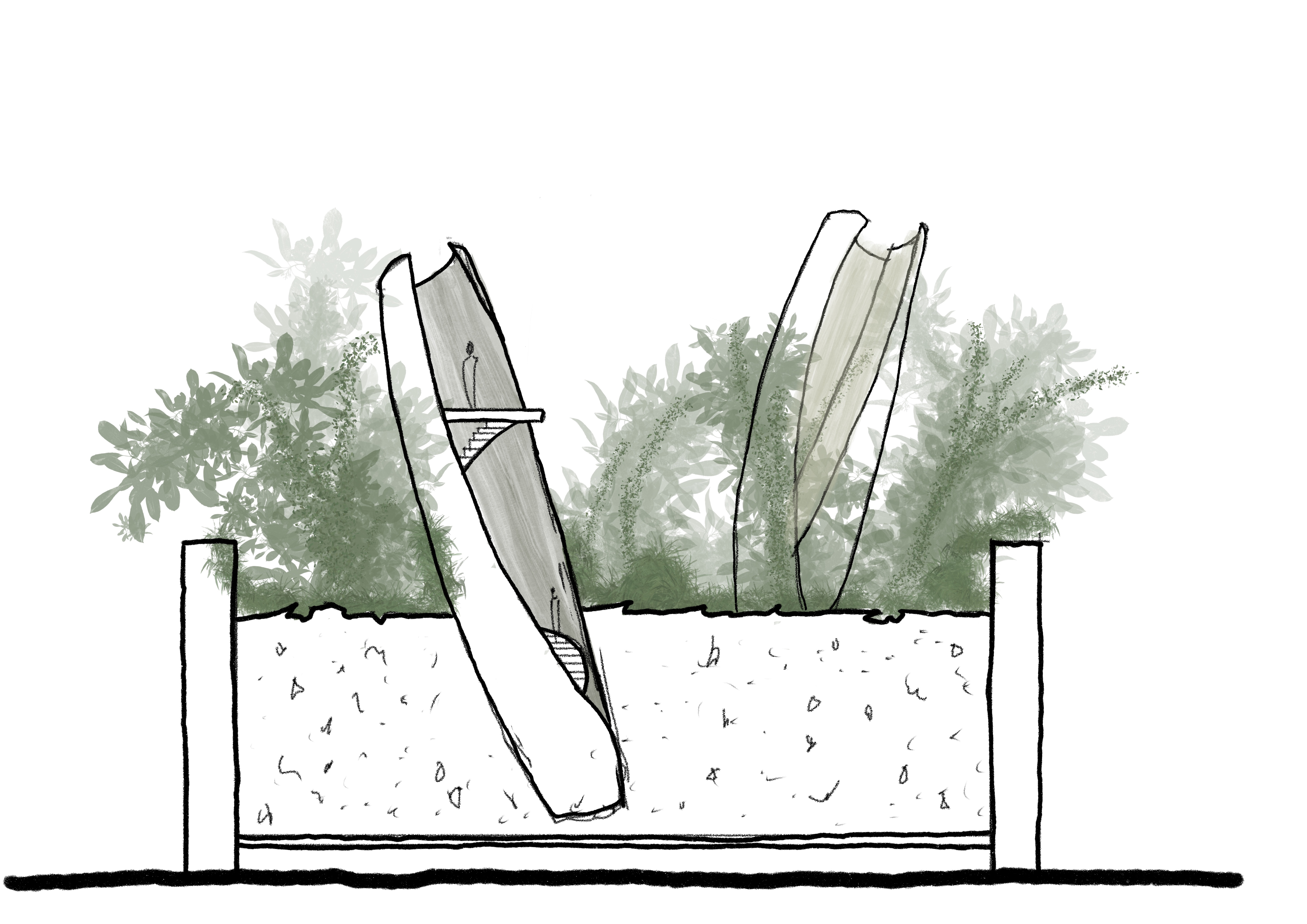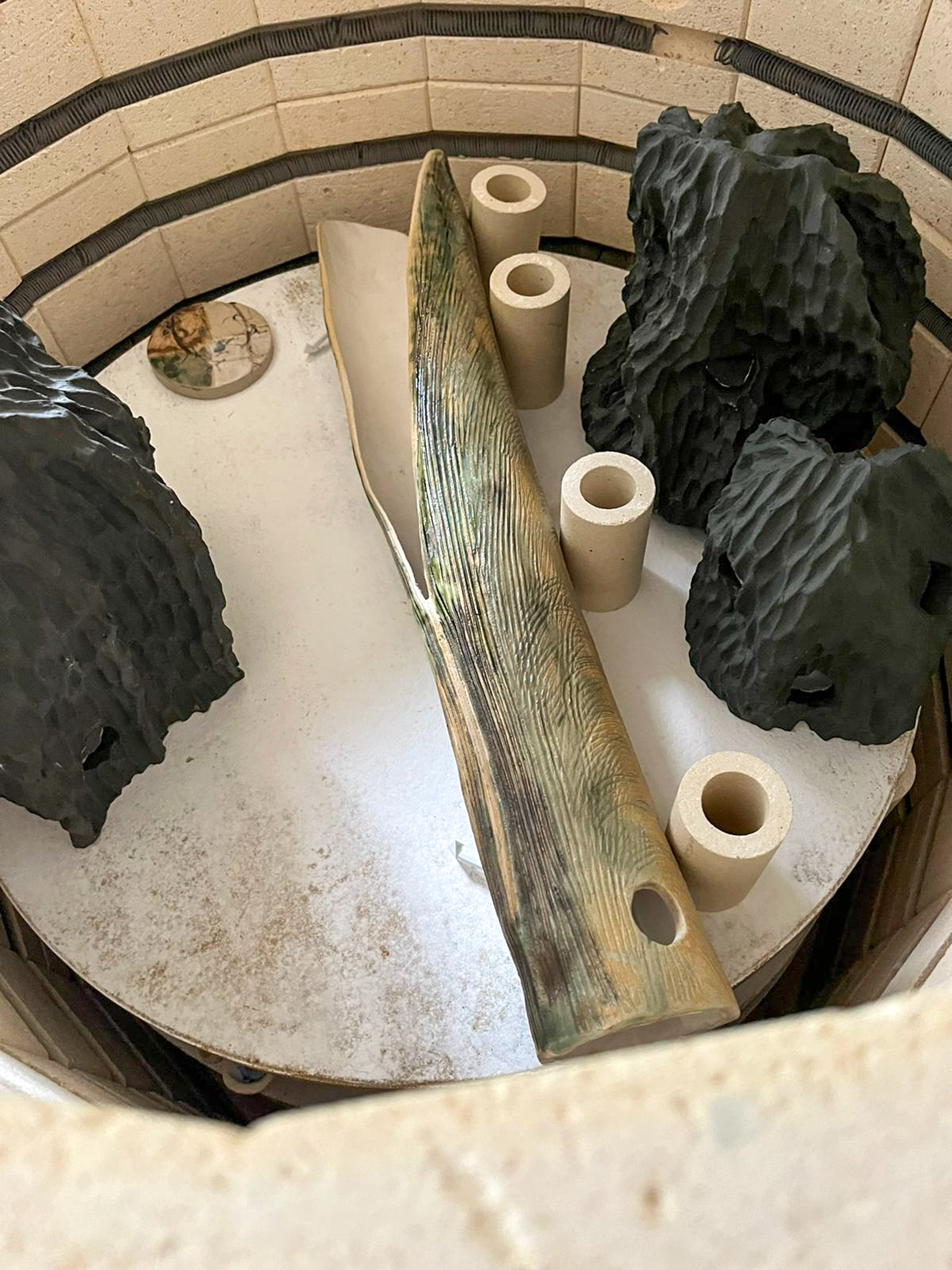Nature’s Architects.
Nature’s Architects is a free, family-friendly trail to discover twenty micro-homes and structures in Chelsea, London. Each one is created by leading architects and inspired by nature and biomimicry. Created by The Museum of Architecture and supported by Cadogan Estate. Look around the doorsteps, tree forks, railings and planters of the Duke of York Square and Pavilion Road - how many can you find? Spot Coral, Kingfisher, Bear, Bat, Hedgehog and Clam and learn about the different ways these creatures make their homes.
Discover how their techniques can help us to be more sustainable and eco-friendly when building for humans.
Built Works were invited by the Museum of Architecture to design four 1:50 scale structures inspired by cacti, octopi, clams and burdock plants. We worked closely with Common Objects on the ceramic and timber pieces.
Status: complete Summer 2022
Client: The Museum of Architecture & Cadogan Estate
Location: Chelsea, London
Installers: Art & Assembly
Ceramics: Common Objects
Collaborating Designers:
- Gruff Architects
- Nooma Studio
- Studio Aki
- Maddie Kessler

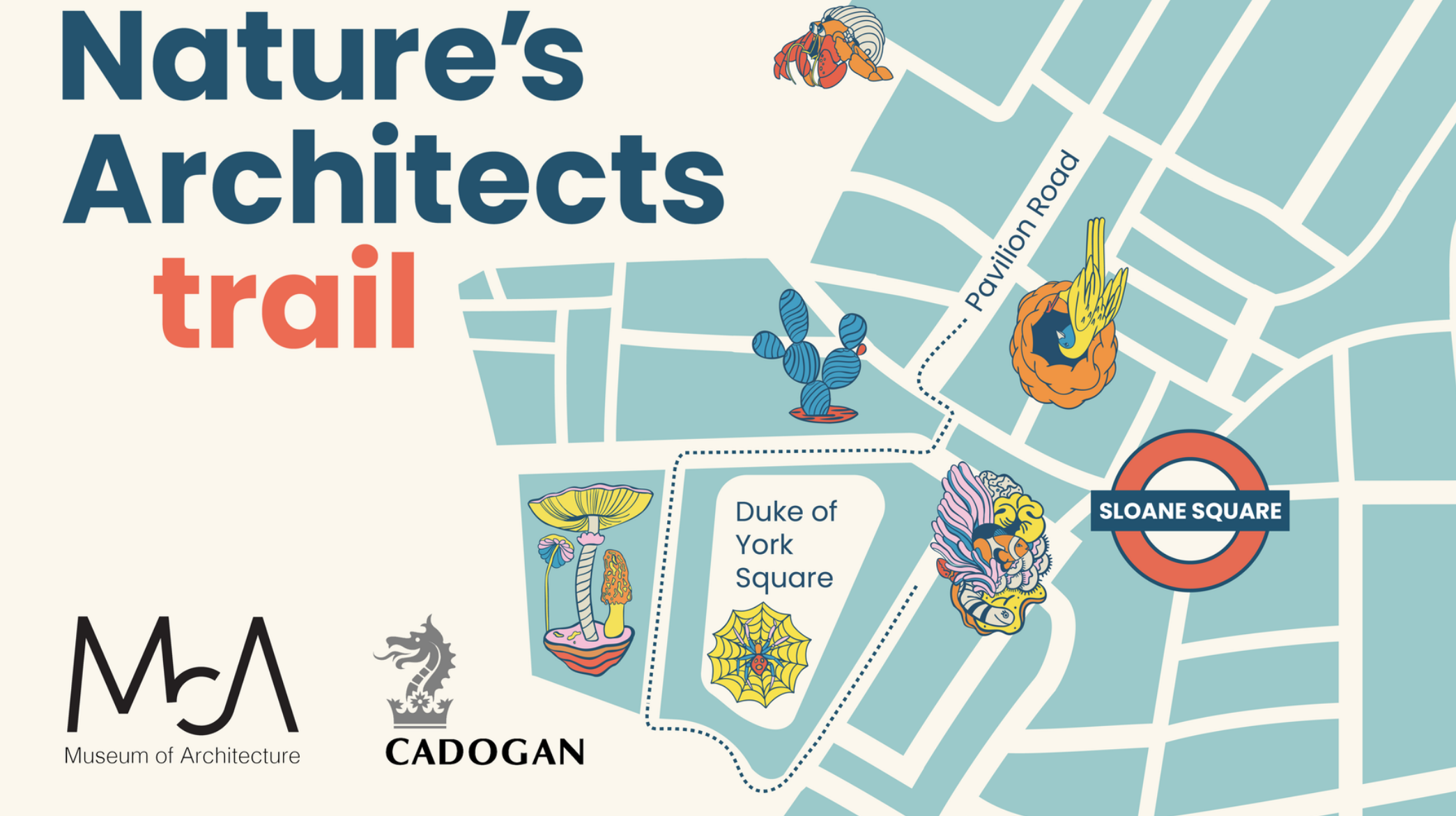
Burdock Plant
Seeds and burrs are dispersed by the blowing wind, flowing water or moving animals. These small structures seem to travel aimlessly, at the mercy of the forces that move them away from their parent plant. But when they touch fertile ground and come to a rest they have the potential to grow into the largest structures seen in nature.
This installation considers the seed up close and the monumental scale of the structures that will spring from it. Up close a burdock burr encloses a number of seeds, fixed into a vaulted structure with buttresses holding the seeds in place like the bays in the aisle of a cathedral, as well as the hooks that cling to passing animals. Like gothic buttresses supporting cathedral walls these structures keep these seeds safe until the moment of release.

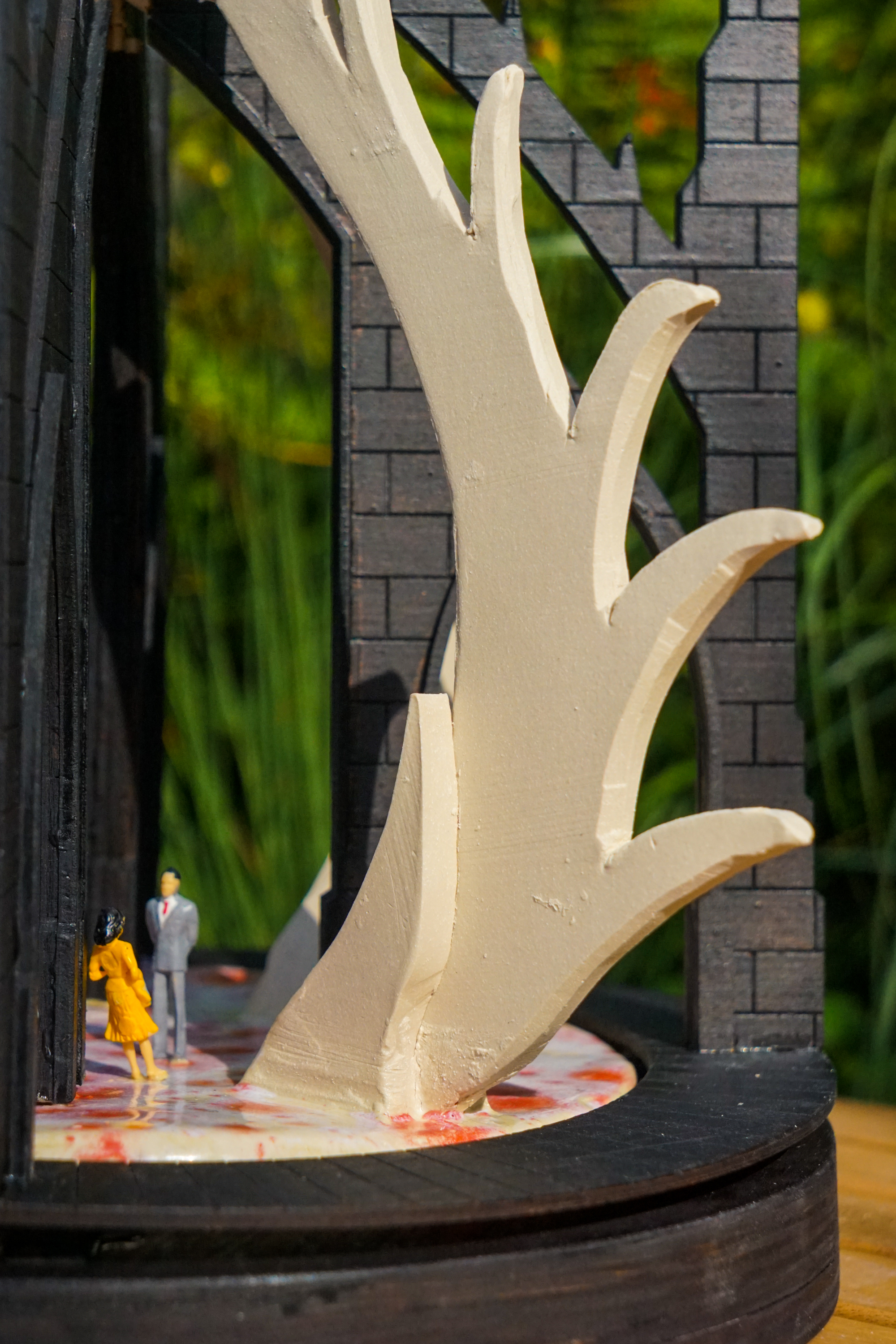

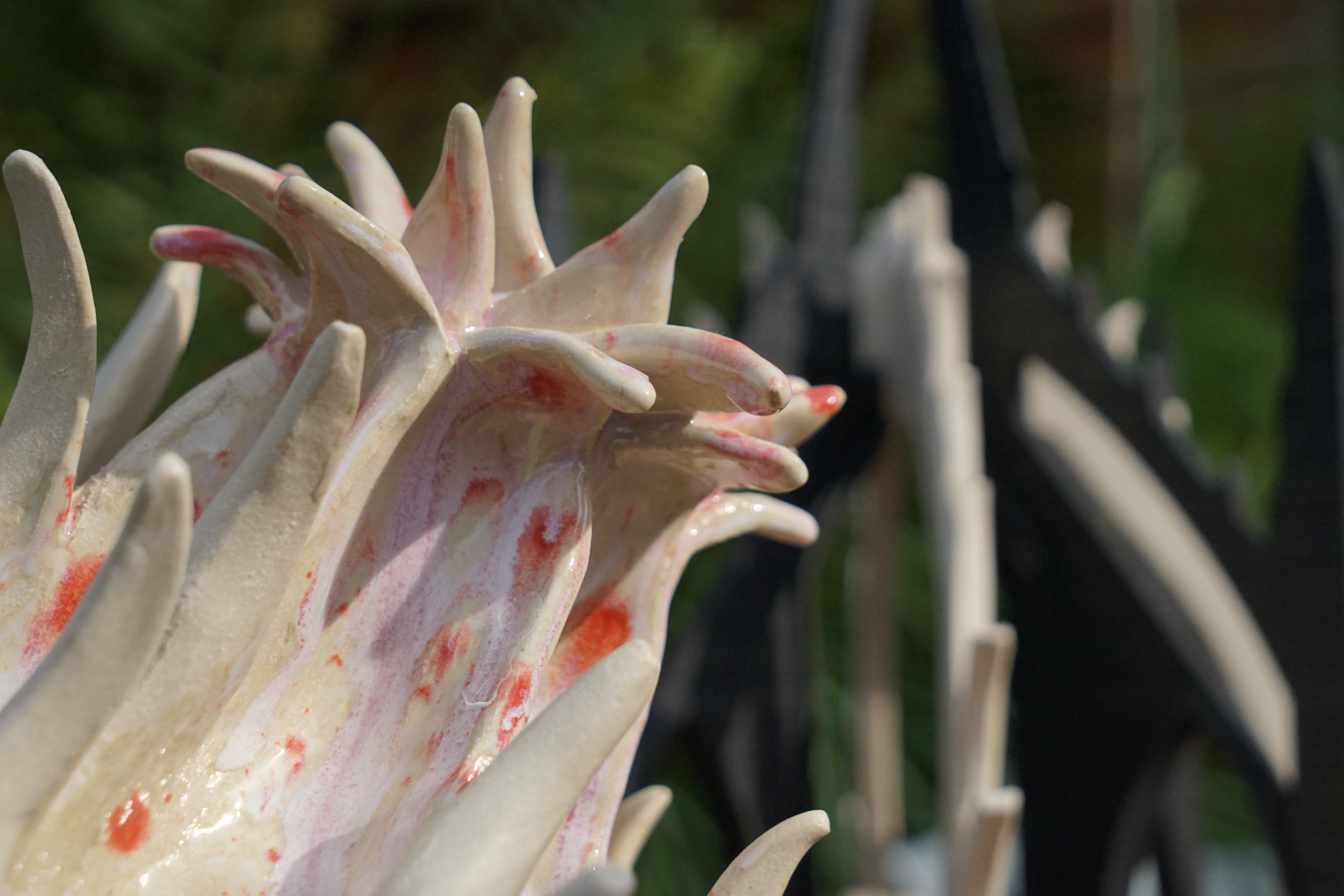

Octopus
An octopus has the ability to conceal itself by altering the texture and colour of its skin to suit the context in which it finds itself. As with architecture there is often a need to adapt to the surrounding context; that context may be man made or natural. On the railings outside the Holy Trinity School, the context is both. Can or should architecture truly adapt to it’s context or should a building have a unique character that contributes more actively to the surroundings?


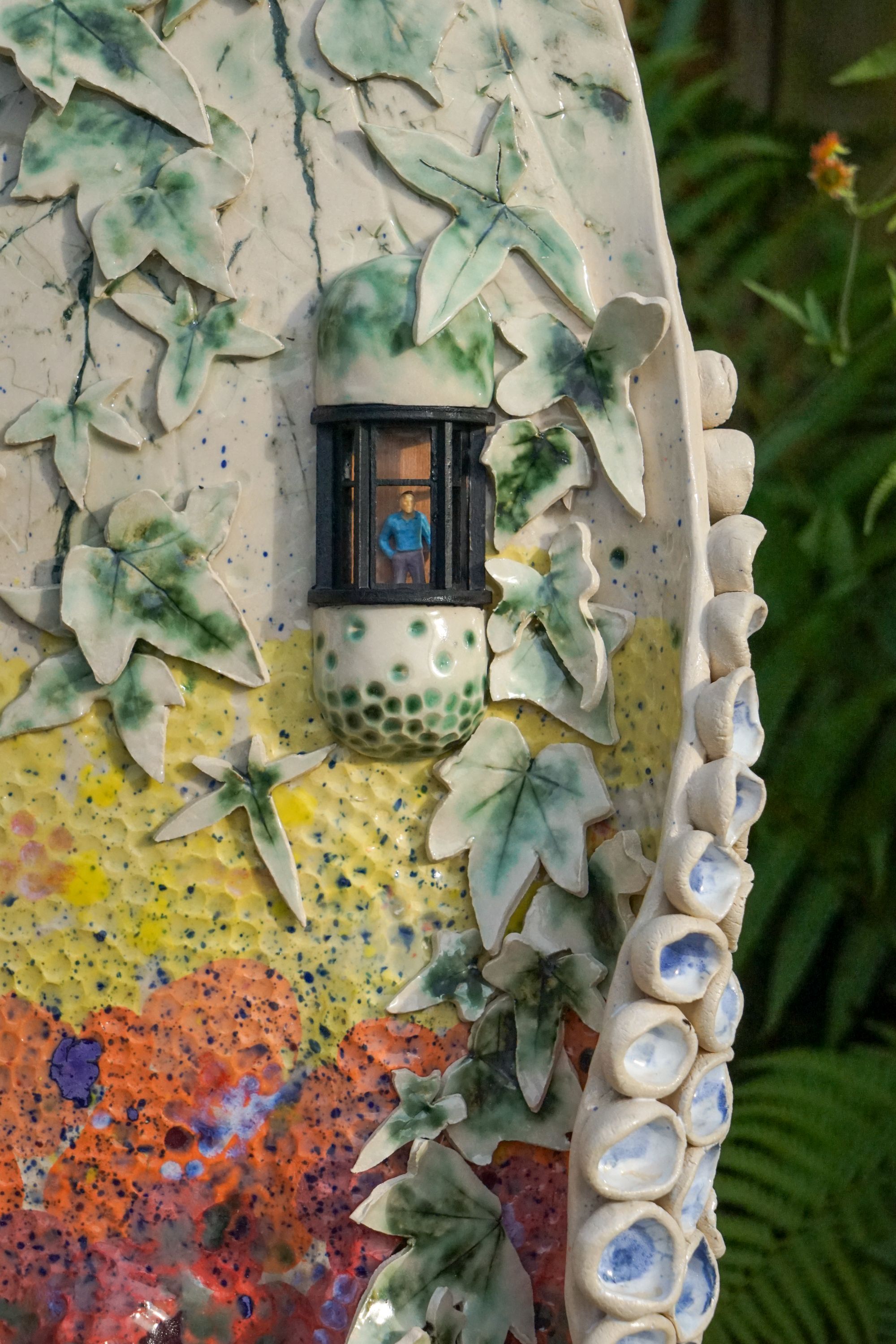

Cactus
Like cacti on a desert cliff, villages and towns can seemingly grow out of the most unlikely places. Here a settlement has started to grow from the railings, out of nothing. The cactus clings to the stone face of the wall. As in nature there are challenges that must be overcome to settle in such places. Where will the inhabitants find water? What do they eat? Do they need to communicate and trade with other settlements nearby?


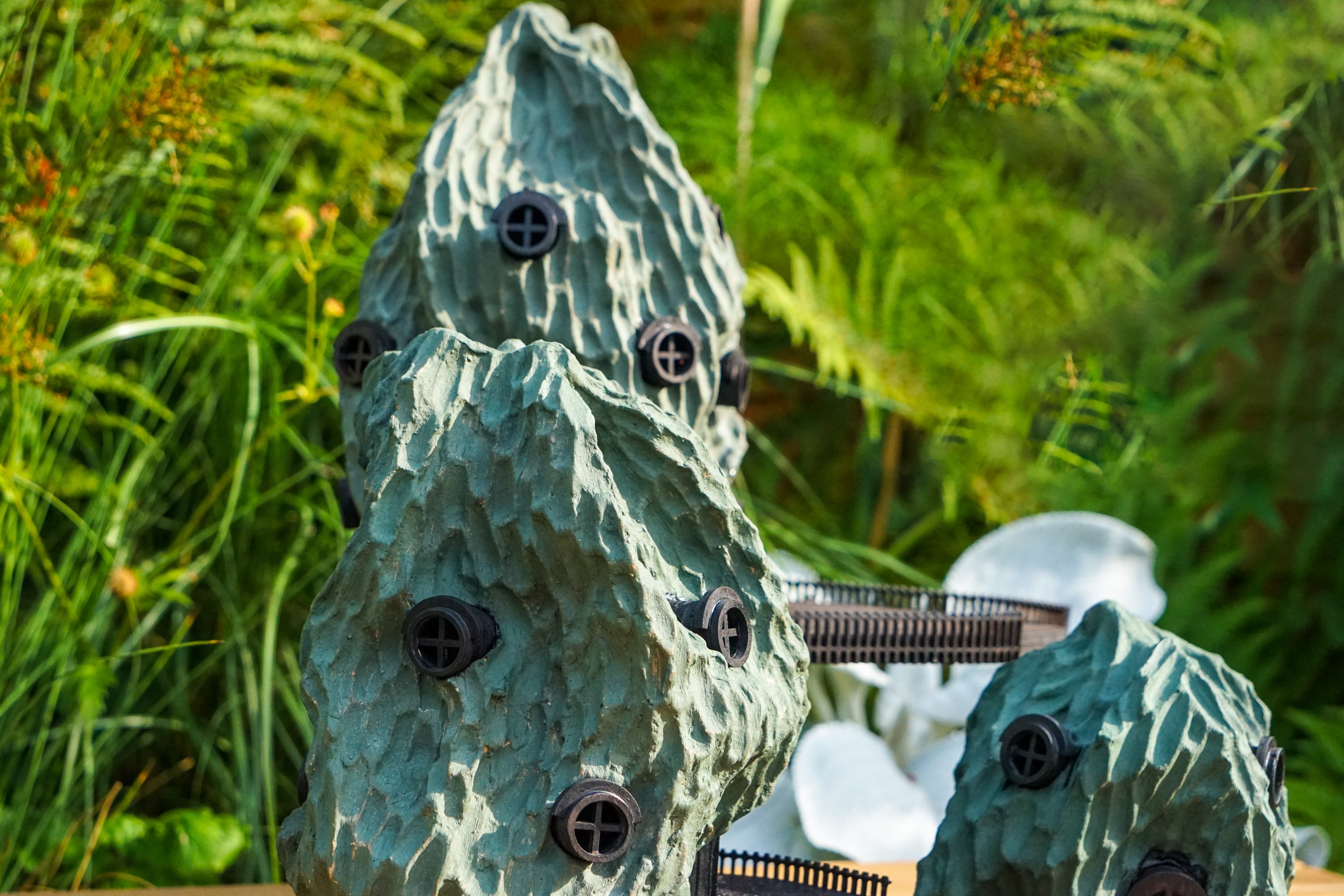

Razor Clam
In nature animals and plants use the ground as a sanctuary; to shield themselves from the elements. Razor Clams can burrow into the sand at 1 inch per second in order to escape predators or the incoming waves. Here clam shells provide a subterranean sanctuary, as well as an above ground lookout.
Architecture should provide a safe shelter and sanctuary, but it should also be outward looking and open. Insular and defensive structures close down cities and reduce public space. There is a balance to be found between a shelter and a castle.
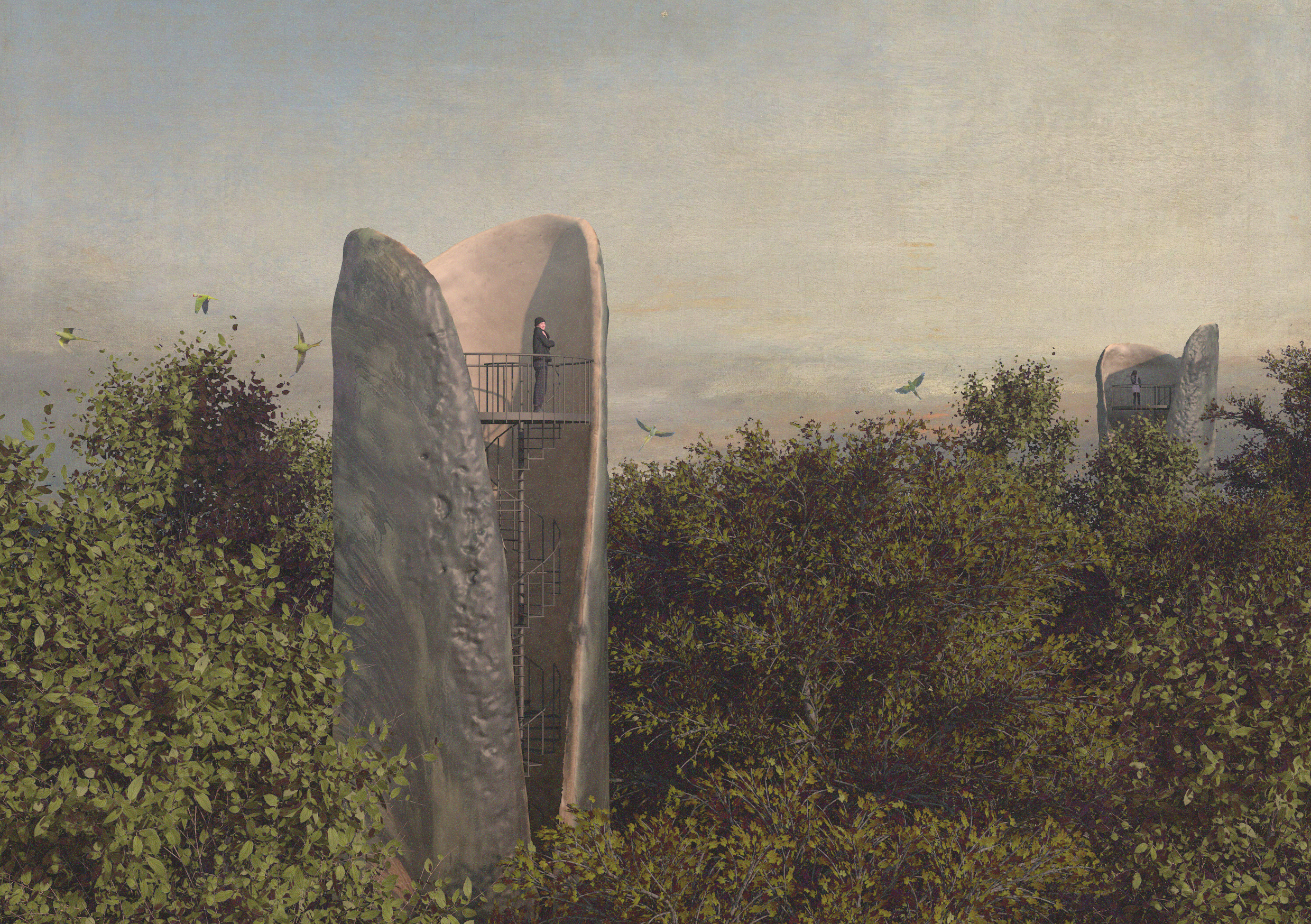

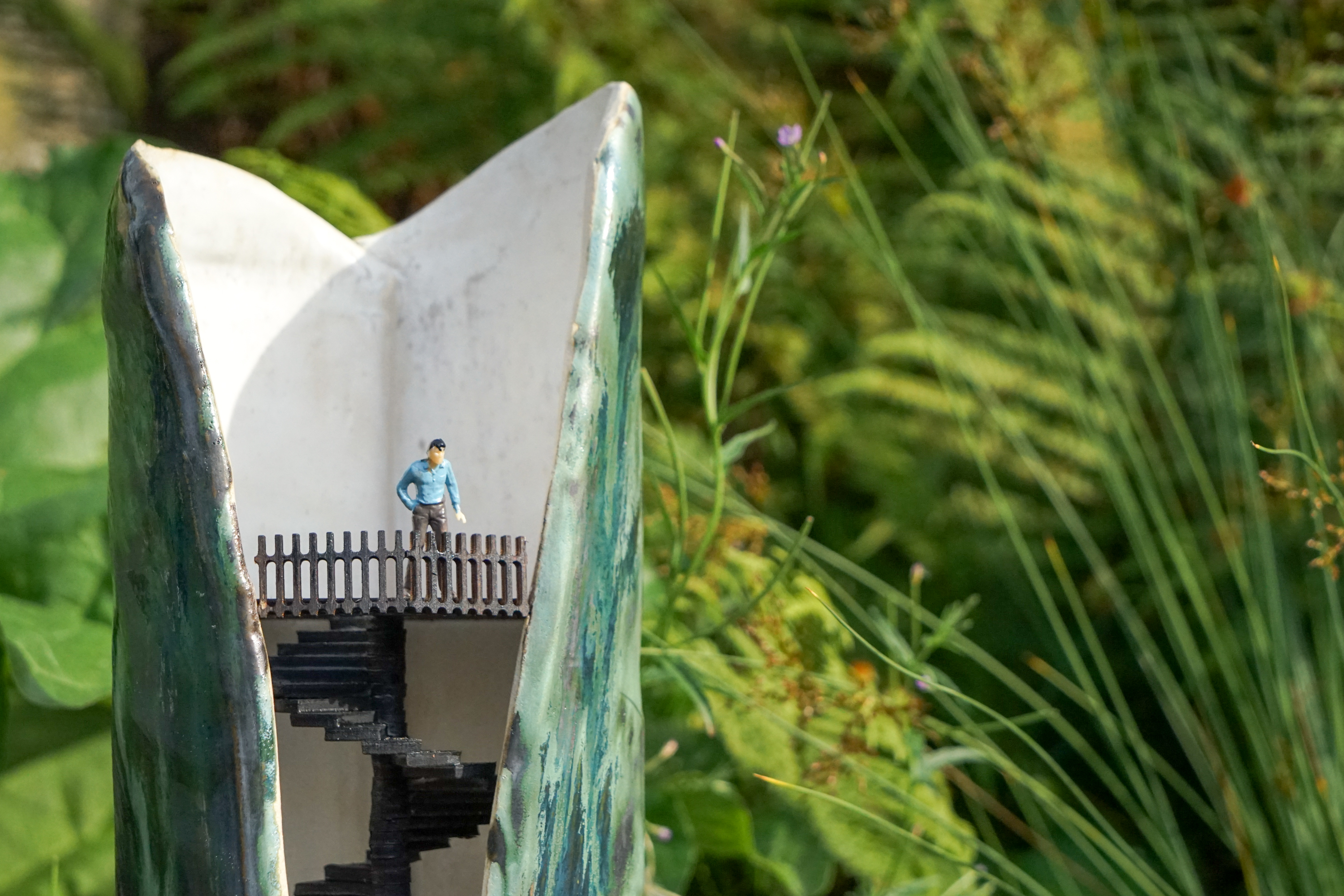

project development.
Ceramics studio Common Objects lead the development of the ceramic structures, clay tests and glaze sampling.
![]()
![]()
![]()
![]()
![]()
![]()
